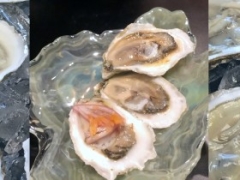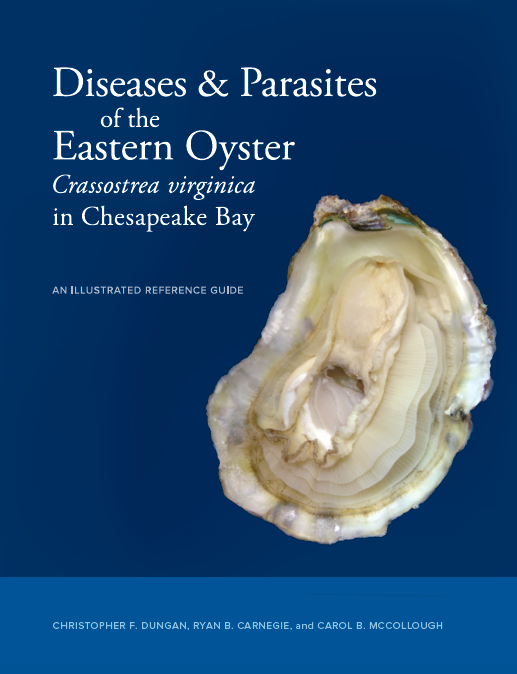Knauss legislative fellowships in Congress help build careers — and they're fun and educational. See our video and fact sheet for details.
Oysters Three Ways: A collection of simple, go-to recipes for all types of oyster eaters
Looking to try some delicious oyster recipes from home that anyone in the family would enjoy? Here’s a great starter series of simplified versions of classic oyster recipes to satisfy any type of oyster eater.
Not only do oysters taste great, they are nutritious. They are packed with protein, omega-3 fatty acids, vitamins, minerals, and antioxidants. And while they are healthy for consumers, they also help to support a healthy watershed. Oysters fill many roles in supporting a healthy ecosystem such as filtering water, providing habitat for local fish, and reducing the effects of shoreline erosion. Now when you enjoy these recipes, think of all the good you are doing for your body and the environment!
These are recipes I have gathered over the past few years working at various oyster farms and during my time researching them at the University of Maryland Center for Environmental Science. If you are new to bringing oysters home and are unsure how to shuck oysters, check out these helpful videos on how to shuck oysters and a trick for simplifying the shucking process.
Fried Oyster Sliders – for the first-time oyster eaters
I started making this recipe when my fiancé and I were working at an oyster farm together. We would take some of the oysters that were too large to sell and eat raw and make this recipe for a quick lunch. Since then, this has been a recipe that I use to share with friends and family who have never tried oysters or are nervous about the texture or appearance of a raw oyster. I have converted many skeptics in the past and I hope that you enjoy these as well. The seasoning for the breadcrumb flour mixture is very flexible and can be personalized to your taste.
Ingredients:
- 12 shucked oysters
- 1/2 cup (65 g) flour
- 1 cup Italian-style or original breadcrumbs
- 1 tsp onion powder
- 1 tsp garlic powder
- 1 tsp oregano
- 2 tsp chili powder
- 2 tsp pepper
- 2 tsp salt
- Vegetable, peanut, or canola oil for frying
- 6 sweet or slider rolls (for average sized oysters)
Preparation:
- Combine flour, breadcrumbs, and spices in a mixing bowl.
- Coat the shucked oyster meat in the breadcrumb mixture.
- Fill either a frying pan or a 2-quart pot roughly 1/2 inch high with frying oil and get it to a temperature of 350˚F (175 ˚C). If you do not have a thermometer, you can check the temperature by sprinkling a pinch of the breading mixture in the frying oil. If the breading sizzles lightly in the oil, the temperature should be good. If it is too high the oil will crack or spit loudly when contacting the mixture.
- Place the breaded oysters in the frying oil and fry until golden brown (roughly 5 minutes). Flip oysters at least once to ensure both sides are cooking evenly.
- When golden-brown, remove the oysters from the oil and set them on a paper towel to remove any excess oil.
- Construct the slider by placing two (or more) oysters on your slider and top with either old bay aioli (see recipe below), tomato, lettuce, or onion as desired.
Old Bay Aioli Ingredients:
- 1/4 cup mayonnaise
- Small clove garlic minced or paste
- Squeeze of lemon
- 1/2 tbsp Old Bay
- Salt and pepper to taste
Old Bay Aioli Preparation:
- Thoroughly mix all ingredients together in a small bowl or cup.
- The resulting aioli can be used as a topping for fried oyster sliders, crab cakes, French fries, or most other fried seafood or chicken dishes.
- Store in an airtight container, use within one week.
Oyster Rockefeller – for those who prefer cooked oysters
This is a simplified version of the traditional oyster Rockefeller recipe. It includes all the typical components but with a drastically reduced prep time. It also looks amazing on the plate! The mixture can be made ahead of time and stored refrigerated or frozen. I have also used any extra mixture I had left over for pasta and chicken dishes as a pesto alternative.
Ingredients:
- 12 shucked oysters on the half shell
- 1 cup spinach cut in ribbons or finely chopped
- 1/2 cup bitter greens cut in ribbons or finely chopped (carrot greens, watercress, arugula, kale)
- 1 tbsp minced basil
- 1 tbsp minced parsley
- 2 cloves garlic
- 1 small shallot
- 1/4 cup Italian-style or original breadcrumbs
- 1/2 of a lemon's worth of lemon juice
- 1/2 cup (1 stick) of melted butter
- 1/4 cup parmesan cheese
- Salt and pepper to taste
Preparation:
- Preheat oven to 375˚F (190˚C).
- Combine all ingredients but the oysters in a mixing bowl and combine until a loose ball can be formed.
- Take roughly 1.5 tbsp of the mixture and spread it over the top of the oyster until the oyster meat is covered (this will vary depending on the size of the oyster).
- Top the oysters with parmesan cheese and place in the oven for 15 minutes or until the cheese and the topping begin to look golden brown and the juices are bubbling lightly.
Mignonette – for the raw oyster eater
Mignonettes are great complements to the natural merroir, or local flavor, of oysters. They add a touch of acidity to the oyster liquor and add some extra flavor and are a great topping option to raw oysters. Unlike a typical mignonette recipe, I have added some shredded carrot to help hold onto the liquid better. Radishes can also be used instead of carrots depending on preference. I also want to strongly suggest the use of freshly cracked pepper if possible. The aroma of freshly cracked pepper does wonders for tying in the flavor of this mignonette, but if you do not have any, ground pepper will also work.
Ingredients:
- 1 cup white vinegar
- 1/3 cup red wine vinegar
- 1 tbsp granulated sugar
- 1 tsp freshly cracked black pepper
- 1 small shallot diced or cut into thin strips
- 1 clove minced garlic
- 1/3 cup carrot shredded finely
- Squeeze lemon juice
- 1 tsp salt
Preparation:
- Combine all ingredients and stir.
- Refrigerate in an airtight container for 4 to 8 hours prior to serving (if possible).
- Top shucked oysters with roughly a teaspoon of the mignonette - it should cover about 3 to 4 dozen oysters.
- This can be stored in an airtight container for at least two weeks.
Photo, top left: A screen shot from the video highlighting how to prepare mignonette showing the completed dish. Credit: Brendan Campbell / UMCES
All videos shot by Brendan Campbell / UMCES and produced by Logan Bilbrough / MDSG
See all posts to the Fellowship Experiences blog


